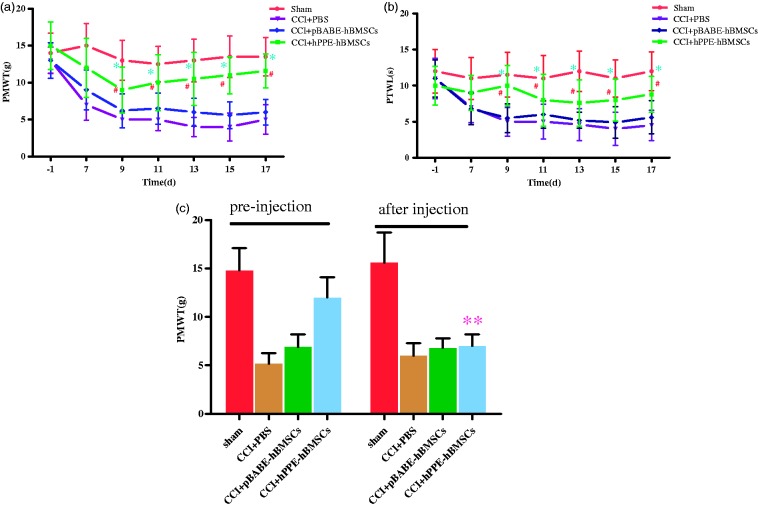Figure 4.
Changes in (a) tactile allodynia (PWMT) and (b) thermal hyperalgesia (PWTL) after CCI and intrathecal (i.t.) delivery of cells. The persisting analgesic activity could be reversed by the opioid receptor antagonist naloxone. (c) Rats were left unoperated in the Sham group (Sham). The other three groups of rats underwent CCI. After five days, the rats were administered vehicle (PBS), pBABE-hBMSCs, or hPPE-hBMSCs (10 µl). PWMT and PWTL were measured before operation and at 7, 9, 11, 13, 15, and 17 days after CCI operation. PWMT was determined 30 min after injection of naloxone. Data are presented as the means ± SD of ipsilateral hind paw observations. Significance was defined as **P < 0.05 versus CCI+hPPE-hBMSCs pre-injection, #P < 0.05, *P < 0.01 versus CCI+PBS group, n = 6. CCI, chronic constriction injury; pBABE, a retroviral vector; hPPE, human proenkephalin; hBMSCs, human bone marrow stem cells. Sham, the Sham group; CCI+PBS, the CCI+PBS group; pBABE-hBMSCs, the pBABE-hBMSC group; hPPE-hBMSCs, the hPPE-hBMSC group.

